I often need different ways to hold wood while working on it. Generally, the better it is held, the more accurate my work. Dog holes on a bench can be used to hold wood in a variety of clever ways, and here is another new addition. Handscrew dogs!
Take two ordinary handscrews and add one bench dog peg to each one. They should be mirror images of each other, rather than identical. I positioned mine midway between the two screws built into the handscrew.
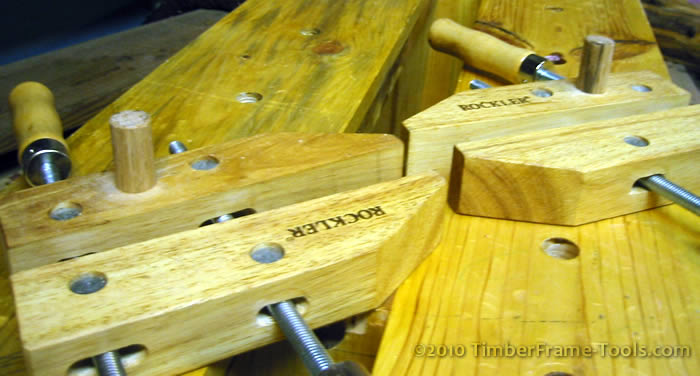
This shows the handscrews with a dog mounted in each one. Notice that the two hand screws are mirror images of each other. NOT identical.
I chose not to drill the holes all the way through the handscrew, I only went half way. In hindsight, given some of the forces I put on the dogs, it might have been safer to drill them all the way through, but they have not failed yet. Use a drill press, if you can, to drill the holes so you are sure they are plumb to the handscrew. Otherwise they won’t sit flat when placed in the dog hole. Before gluing the pegs (3/4″ oak) in place, I used a block plane to chamfer the end of the pegs a little and scraped a bit of the diameter down so they were not quite so snug in the dog holes of the bench. That’s it. A 5 minute job to make a very flexible clamping system.
What makes them so useful is the basic geometry that any two points determine a line. So by placing a pair of handscrews into two dog holes, they can be turned to form a line between them… and a board can then be clamped on that line. Here are just some of the ways I use them.
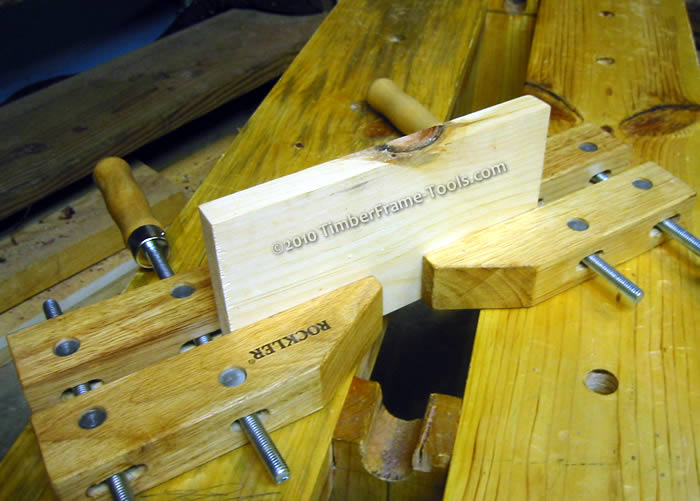 As a short surface vise, you are only limited by the length of the jaws. In most cases the jaws of each clamp can get pretty close to each other, so you can securely clamp small boards.
As a short surface vise, you are only limited by the length of the jaws. In most cases the jaws of each clamp can get pretty close to each other, so you can securely clamp small boards.
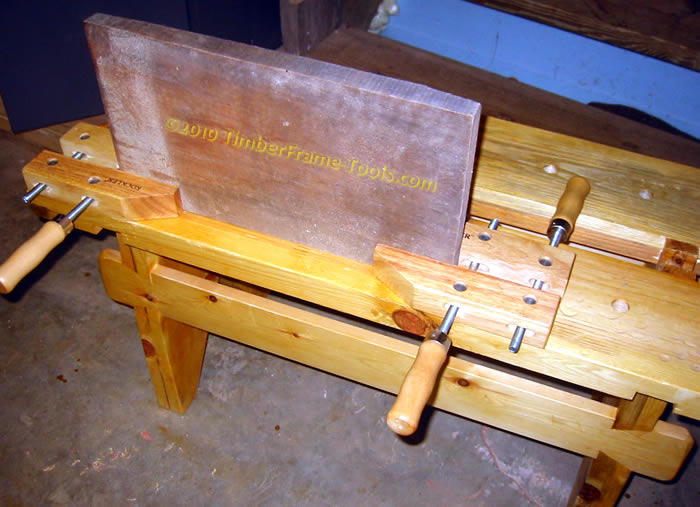
On taller boards like this, the wide footprint of the clamps help considerable, but if there is a little bit of wobble, an third clamp securing either handscrew to the workbench top will make it solid.
By moving the handscrews to dog holes that are farther apart, you can hold longer items securely. The width of the handscrews makes them fairly stable on the surface of the bench. However, I have noticed that sometimes if the dog hole has been opened up a little bit, the handscrew may move just a bit when holding taller boards like this. If that is the case, simply putting a third clamp (F-clamp, quick clamp, C-clamp, or even another handscrew) to secure the handscrew to the bench-top makes it steady.
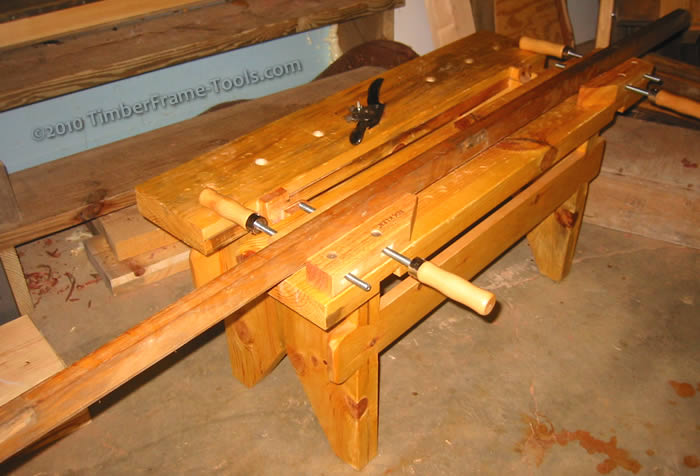
You are not limited to just clamping between the jaws of the handscrew.
Since handscrews are fairly thick, there is usually a 1/2″ or more of the clamp that sticks up above the screw threads. Workpieces can actually be secured that are longer than the distance between the clamps. Though be careful to not allow the threads of the clamp to damage your wood.
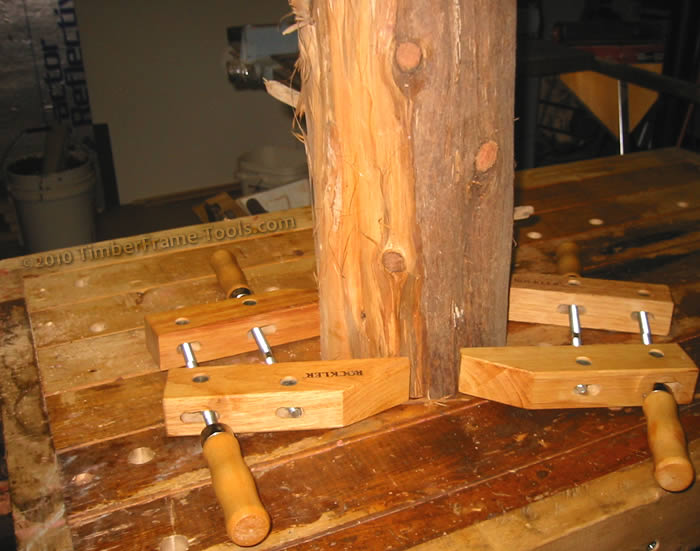
Not restricted to flat boards with this surface vise system.
One of the often overlooked talents of the handscrew is that it does not require surfaces to be parallel to each other. So this surface vise can often hold irregularly shaped objects.
Handscrews come in sizes ranging from 4″ to 14″. I find the 8″ inch or 6″ variety work well. Too big and it is harder to get them closer together on your bench top. Too small and they have more limited clamping potential. Your decision can depend on your needs. The nice benefit is that adding a dog peg to your handscrew, does not prevent them from being used as ordinary handscrews. They can easily serve double duty.
I use them on both my bench and my saw bench quite regularly. Using them on my new fangled saw bench, I often chuckle at the notion of it being a galoot’s version of a Black&Decker Workmate.